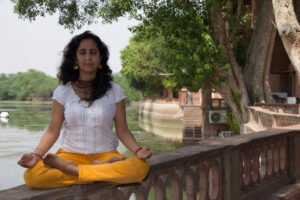“Harmonizing Your Breath”
If you would like to take your yoga practice to a different level, here are a few tips to keep in mind regarding breath.
As yoga evolves, finding a balance in what we are learning has become crucial. We cannot leave yogic techniques and methods behind, nor can we fully continue on the same path, as our lifestyles have changed. In this transition, we need to adapt. In this blog, I will discuss how we have dropped many powerful methods of breathing and adopted a more generalized approach to breath(Pranayama).
The Significance of Breath in Yoga
When we talk about yoga, breath is one of the most discussed aspects. Taking care of our breath (Pranayama) is essential. Working on the breath is like working with a musical instrument. Just as a musician must tune and understand their instrument, we must tune our breath to achieve the best results. Knowing how to tune your breath can transform your life. Breath(Pranayama) is a tool that can change your emotions, sleep, response to stress, and mental and physical health. Knowledge of breath can also relieve you from traumas.
Understanding Breath Tuning
As a yoga practitioner, it is crucial to learn how this tuning works and to delve deeper into understanding rechaka (exhalation), puraka (inhalation), and kumbhaka (breath retention). Many yoga teachers and students understand this, but for others, this rhythm is not well-known. They often stick to constant deep inhaling and exhaling or ujjayi breath(Pranayama), which has become a very generalized approach.
Tailoring Breath to Individual Needs
 Breath is a versatile tool that can adapt to different conditions. For instance, there are specific breathing techniques for managing high blood pressure and different ones for low blood pressure. While practicing yoga asanas, sometimes we breathe (Pranayama) constantly, and sometimes we hold the breath to optimize its effects. During yoga classes, we often do not pay enough attention to these nuances. Understanding the appropriate breathing techniques (Pranayamas)for various needs is essential for maximizing the benefits of yogic breath. Apart from using the right kind of breath for each posture, one should also consider the weather—there are different breathing techniques for different weather conditions, as well as for mornings and evenings.
Breath is a versatile tool that can adapt to different conditions. For instance, there are specific breathing techniques for managing high blood pressure and different ones for low blood pressure. While practicing yoga asanas, sometimes we breathe (Pranayama) constantly, and sometimes we hold the breath to optimize its effects. During yoga classes, we often do not pay enough attention to these nuances. Understanding the appropriate breathing techniques (Pranayamas)for various needs is essential for maximizing the benefits of yogic breath. Apart from using the right kind of breath for each posture, one should also consider the weather—there are different breathing techniques for different weather conditions, as well as for mornings and evenings.




